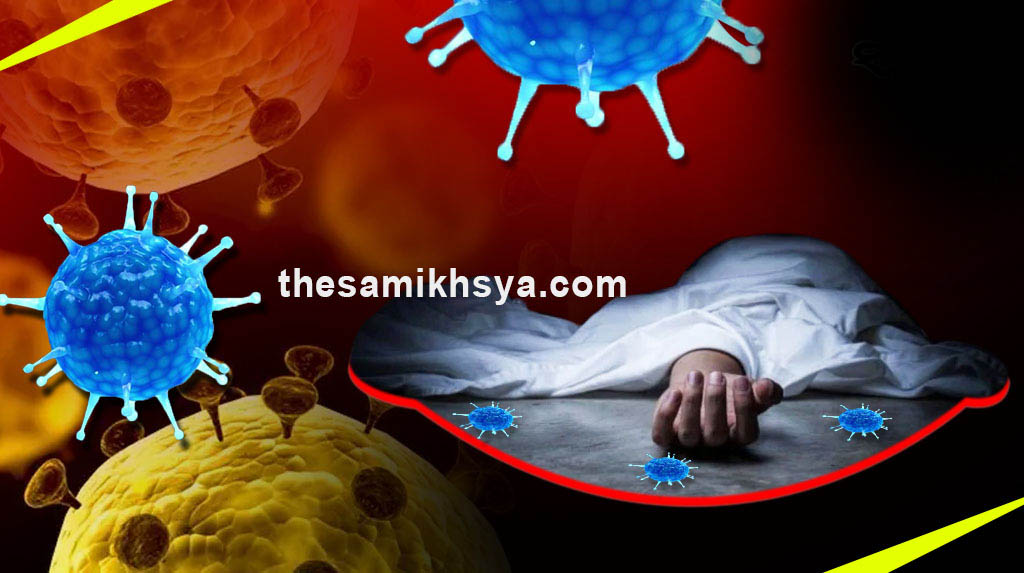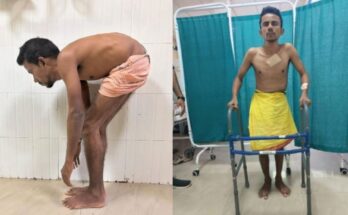Mumbai, June 17 (IANS) It was on March 17 that Maharashtra notched the first COVID-19 death of a 64-year old man who died at the Kasturba Hospital in Mumbai. Exactly 90 days later, the state death toll has zoomed from 1 to 5,537 — or a rough average of 62 deaths per day.
In Mumbai, since the first death, the figure of fatalities has touched 3,167 — or an average of around 35 deaths per day.
Till June 15, the COVID-19 situation was considered tolerable, but on June 16 after the state government announced the reconciliation of unconfirmed deaths in the past few weeks – a staggering 1,328 – the state total catapulted from 4,128 to 5,537 at one shot.
Portending ominous data days ahead, the state health department revealed on June 16 that another 284 deaths still remain to be confirmed.
In terms of the spread, the state has shot up from only two COVID-19 positive cases on March 9 to 1,13,445 today — a staggering average of 1,260 cases per day in the past nearly 100 days.
A month on from the first patient’s death (March 17), the state on April 17 recorded 201 deaths and 3,320 patients; which by May 17 shot up 10 times to 33,053 cases and 1,198 fatalities; and by June 17 it has more than tripled to 113,445 patients and quadrupling to over 5,537 deaths today.
Currently, Maharashtra has overtaken Canada which has 99,467 patients (No. 17 on Worldometer COVID-19 dashboard) and the state is consistently adding more cases daily compared to the United Kingdom.
Simultaneously, the state has also recorded an unbelievably high recovery rate of 50.99 per cent, and a low mortality (death) rate of 3.70 per cent till June 15, which suddenly shot up to 4.08 per cent on June 16.
This must be viewed against the backdrop of April, when at one point the state’s mortality rate was the highest in the world, shocking health authorities.
However, with the efforts of the state government, the death rate gradually came down to 3.70 per cent, compared to the global average (5.52), and closer to the national average (2.89). However, Tuesday’s reconciliation figures again pulled up the death rate sharply to 4.08 per cent (June 16).
Barely 72 hours before the first death (on March 17), the state had invoked the Epidemic Diseases Act, 1897 (March 13) and the next day framed ‘The Maharashtra COVID-19 Regulations, 2020’ (March 14).
From March 15, the state had lapsed into a partial precautionary lockdown — confident of grabbing the invisible Coronavirus by the horns — followed by ongoing extensions to reach Lockdown 5.0.
By March 31, during the first phase of lockdown, the state recorded 10 deaths and 302 patients, including Mumbai’s 7 fatalities and 151 patients.
Till the second lockdown, by April 15, the state notched 187 deaths with 2,916 cases, comprising Mumbai’s 114 deaths and 1,896 patients.
As the third lockdown was on by April 30, the state recorded 459 deaths with 10,498 patients including Mumbai’s 290 deaths and 7,061 cases.
By June 16 when the easing of lockdown was underway, COVID-19 had spread its deadly tentacles to all 36 districts in the state.
Mumbai has emerged as India’s “Corona Capital” with 3,167 deaths and 60,228 cases, besides Maharashtra’s 53,217 cases and 2,370 fatalities (Total: 1,13,445 patients & 5,537 deaths).
Zooming ahead to grab the second worst-hit hotspot in June, Mumbai’s adjoining Thane district has 641 fatalities and 19,328 patients, and Pune now ranks third with 588 deaths and 12,888 patients.
Mumbai Metropolitan Region (Thane Division – Mumbai, Thane, Palghar and Raigad districts) has 84,121 patients and 3,976 deaths, followed by Pune Division (Pune, Solapur, Satara districts) standing at 15,603 cases and 806 fatalities.
In the BrihanMumbai Municipal Corporation (BMC) jurisdiction, the worst-hotspot is Asia’s biggest slum, Dharavi with 77 deaths so far, often called Maharashtra’s ‘Wuhan’.
The spiraling cases and increasing deaths sparked panic, especially among the migrants, estimated at around 4 million in the MMR, including around 2 million in Mumbai and many fled the city to safer environs in their home states.




